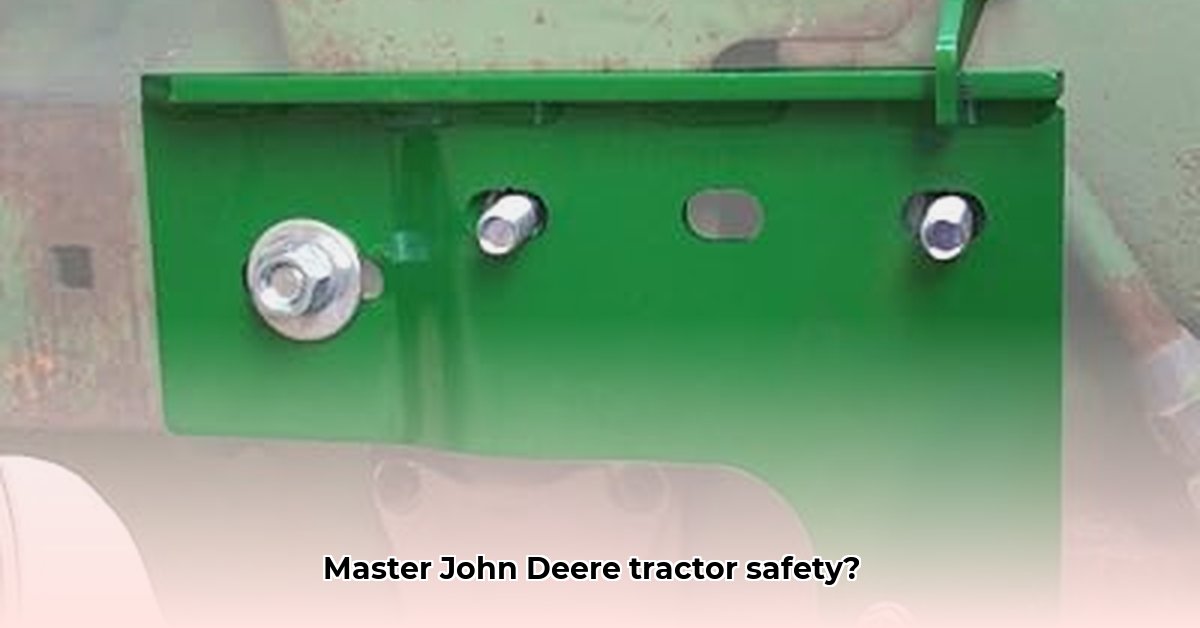
Climbing onto your John Deere tractor shouldn't be a hazardous task. Safe and easy access is crucial for farm efficiency and worker well-being. This guide provides a step-by-step approach to selecting and installing appropriate tractor steps, prioritizing safety and compliance. For information on the largest John Deere tractors, see this page.
Choosing the Right John Deere Tractor Steps: Finding the Perfect Fit
Selecting the ideal steps involves several key considerations. Do you require universal steps (compatible with multiple models) or custom-fit steps (designed specifically for your John Deere model)? Universal steps generally offer lower costs but may not provide the same secure fit as custom options. Custom steps, while more expensive, offer superior integration and stability. Have you considered the material? Steel offers robust durability, while aluminum provides a lighter-weight alternative. Some steps even incorporate integrated lighting, enhancing visibility during low-light conditions. Crucially, ensure compatibility with your exact John Deere tractor model before purchasing.
Installing Your John Deere Tractor Steps: A Step-by-Step Guide
Installation procedures vary depending on step type and tractor model. Always consult the manufacturer's instructions as your primary resource. Safety is paramount throughout this process.
Step 1: Preparation: Gather necessary tools (typically basic hand tools suffice). Thoroughly clean the tractor mounting area. Before commencing, read the entire installation manual to prevent omissions that could compromise safety and functionality.
Step 2: Precise Positioning: Position the steps according to the manufacturer's specifications. Accurate placement ensures optimal stability and user safety. Slight misalignment can significantly impact step security.
Step 3: Secure Fastening: Utilize appropriate fasteners and tighten them securely, but avoid over-tightening, which can weaken the assembly. Double-check all fasteners to confirm a stable and secure fit.
Step 4: Thorough Testing: Before using the steps, conduct a thorough stability test. Check for any wobbling or looseness. If issues are detected, readjust until complete stability is achieved. This crucial step prevents potential accidents.
Safety Considerations: Your Well-being Is Paramount
Properly installed and regularly maintained tractor steps are vital safety investments. Conduct routine inspections, checking for wear, tear, loose bolts or any damage. Replace damaged components immediately. Compromised steps pose significant safety risks, so prompt replacement is essential. Incorporate regular inspections into your preventative maintenance schedule. Isn't preventing injuries far more cost-effective than treating them?
Legal and Regulatory Compliance: Understanding Local Standards
Safety regulations vary geographically. Adhere to local standards when selecting and installing tractor steps. Non-compliance may lead to warranty issues or legal repercussions. If uncertain about local regulations, contact your regional agricultural authority for clarification.
Deere vs. Aftermarket Steps: Weighing Your Options
The decision between John Deere-branded steps and aftermarket options involves a cost-benefit analysis. Deere steps usually offer superior durability and a perfect fit, but come with a higher price tag. Aftermarket alternatives, such as those from K&M, often provide more affordable choices. However, some users report less robust durability compared to OEM parts.
| Feature | John Deere Steps | Aftermarket Steps (e.g., K&M) |
|---|---|---|
| Cost | Higher | Lower |
| Durability | High | Variable; may compromise strength over time |
| Compatibility | Guaranteed fit for compatible John Deere models | Compatibility varies; verify before purchasing |
| Warranty | Typically longer warranty period | Warranty may vary by retailer and specific model |
Remember, prioritizing safety is paramount. Don't compromise on safety features or installation integrity. Investing in reliable tractor steps and ensuring proper installation is a small price to pay in comparison to potential accident-related costs.